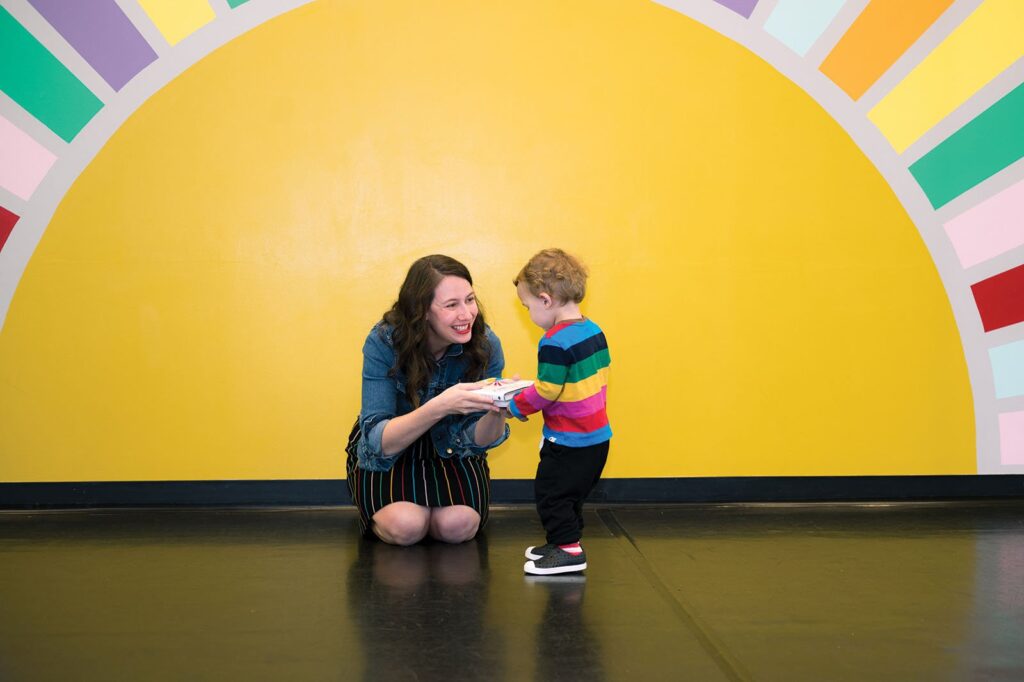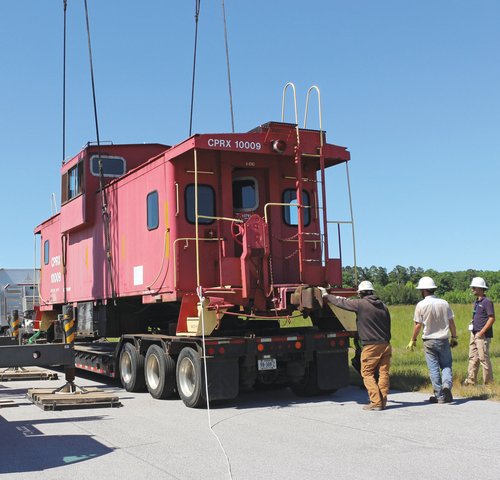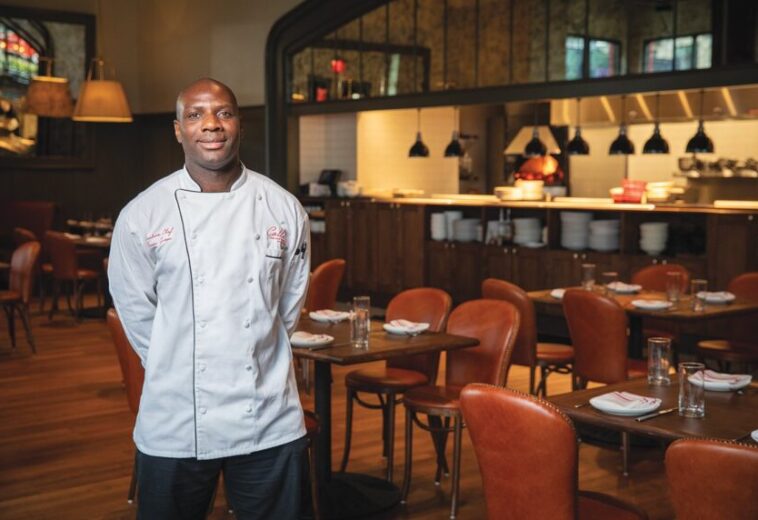Article:
Volunteers restore 10 historic railway cars to their proper resting place
BY MANDY HOWARD | PHOTO BY ANGELA JAMISON
In the fall of 2019, R. Victor Varney, a dedicated volunteer of the New Hope Valley Railway and North Carolina Railway Museum, was cutting the grass at the open-air train museum when he saw something alarming. Just off the property on another branch line, workers were removing a railway switch. The switch hadn’t been used in years, but the removal of it meant something vital to Varney and to the museum. This switch was the connection point to the Harris Nuclear Plant, where four historic trains owned by the North Carolina Railway Museum had been stored for nearly 40 years.
Museum volunteers tried to find ways to stall the removal until the cars could be retrieved, but their efforts were in vain. By the time they found the right person to speak with, the switch was gone. Four historic train cars, some built over 100 years ago, had no path home.
FROM 4 TO 10
The New Hope Valley Railway in New Hill, aka “the Triangle’s Train,” is an educational nonprofit run by the North Carolina Railway Museum with a mission to preserve and share North Carolina’s railroad history. It has been offering rides on authentic vintage trains since 1988 and is the only operating historic railway system within the state. After acquiring the four historic cars, which include two Pullman-built passenger cars, a baggage car and a box car, the museum stored them at the power plant until it was financially feasible to store them on museum property.
In the 1980s and 1990s, museum volunteers often visited and cleaned the cars at Harris Nuclear Plant, always looking forward to bringing the cars “home.” But 9/11 changed everything. Security increased everywhere, and museum volunteers were prohibited from entering the power plant grounds. These train cars were stranded, but never forgotten. When the switch was removed nearly two decades later, volunteers knew they needed to make a move then, or risk losing the cars forever. They sought, and were granted, permission to see the condition of the cars.
It turns out that being abandoned at a high-security power plant managed by Duke Energy Corporation was a mixed blessing. The cars were weathered, but intact. “There was no vandalism,” Varney says. “No one had touched them.”
When volunteers met with Duke Energy personnel about moving the cars, they were offered something incredible. Duke Energy Corporation had six additional historic train cars—four flat cars and two cabooses—that were destined for the scrap yard. If the North Carolina Railway Museum could move them, it could have them.
The museum quickly accepted the gift and challenge, and plans for the move began in January 2020. Each 20-plus-ton car would need to be delicately lifted by an industrial crane and placed on a flatbed truck for the 5-mile drive. Then another crane would need to lift the car from the truck to place it on tracks at the museum site.
Countless hours were spent assessing safety protocols, the physics, the roads and intricate details, including contacting the cable and power companies to lift the overhead lines on the route to the museum. It was a complex project, and they were making progress.
But, “you know what happened then,” Varney says with a sigh. COVID-19 stopped the efforts in its tracks. Literally.
Not only were museum volunteers shut out of the power plant again, but New Hope Valley Railway train operations screeched to a halt. By the end of 2020, the situation looked bleak. The pandemic had financially decimated New Hope Valley Railway, which receives funding primarily from train ticket sales, and the power plant would scrap all 10 historic train cars if volunteers couldn’t find a way to transport them. That’s when “Save the Ten” was born.
‘SAVE THE TEN’
The North Carolina Railway Museum is a private nonprofit staffed entirely by volunteers. Members of the organization are passionate about trains and the impact trains have had on our country. Upon the launch of “Save the Ten,” an initiative aimed specifically to fund the transport of the 10 historic railroad cars to the museum site, it was no surprise that members of the museum made the first and biggest contributions. In just five months, museum members had contributed nearly $100,000 to the effort. Soon, the plight was recognized by train enthusiasts near and far. Donations came in from around the country and, for the first time in the museum’s history, the state legislature approved a grant to help the cause.
The organization reached its ultimate goal of nearly $200,000 by the end of 2021, and what had once seemed impossible, was imminent. On the week of May 9, 2022, after years of plans and seemingly insurmountable hurdles, all 10 trains were lifted, driven and placed back down with impeccable care on the grounds of the North Carolina Railway Museum. The move from power plant to their forever home took just three days.
FULL SPEED AHEAD
In order to understand this effort, the historic significance of these trains must be highlighted. In addition to the four early 20th century cars originally owned by the museum, the six cars that Duke Energy Corporation donated were important because of their decades-long role of transporting used nuclear fuel.
The two cabooses are unlike any other on display. They were dubbed “escort vehicles” because their function was to guard the flat cars, which carried spent nuclear fuel from all over the Carolinas to Harris Nuclear Plant, where they could be safely stored.
Safety and security were paramount. Unlike other cabooses, these cars have machine gun mounts and were equipped with red light systems, like what submarines have, to help with night vision for patrolmen. When the cabooses ran their last run in 2015, the doors were shut and left untouched—unintentional time capsules now being restored. Some items left behind include dosimeters (to track radiation), full body suits and gloves and, interestingly, a half-eaten pack of Fig Newtons … completely preserved.
After a private inauguration event in May 2023 to honor those who originally worked with the trains, the museum volunteers hope all North Carolinians will come out and experience this piece of history that was almost, literally, scrapped forever.




